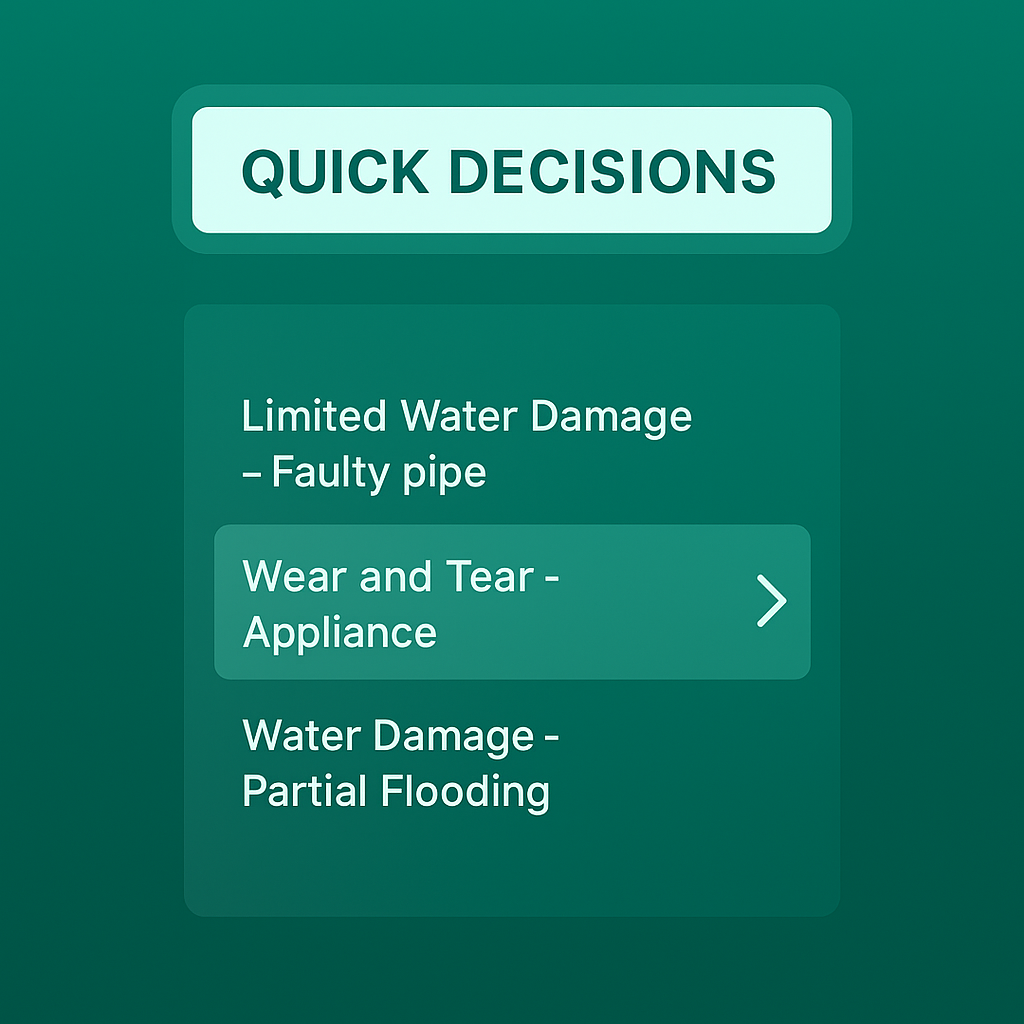Insurance carriers face a constant balancing act: meeting strict regulatory mandates for claim status updates while managing high claim volumes and resource constraints. Before Kyber, teams relied on manual processes to trigger vendors to generate status letters, routine, low-content communications that must be sent at regular intervals to comply with state regulations. This approach left room for missed deadlines, formatting errors, and resource drain, especially as requirements vary by state and line of business.
With Kyber, claims teams already benefit from AI-generated correspondence for denials, partial denials, and payment letters. Now, with the launch of Status Letters, we are making it even easier to automate one of the most frequent and compliance-critical communications in insurance.
A status letter is a formal update to the claimant on the current stage of their claim. It confirms that the claim remains active, outlines any next steps, and reinforces the insurer’s ongoing engagement. While the content is often minimal, its purpose is critical: to meet jurisdictional requirements, provide timely reassurance, and maintain transparency throughout the claims process. The best status letters are concise, accurate, and compliant with every applicable regulation. They reflect a consistent tone that aligns with the carrier’s brand, integrate seamlessly into adjuster workflows, and include a complete audit trail to prove timeliness and content accuracy.
We chose to tackle this use case next not only because of high demand, but because status letters represent the ideal intersection of regulatory importance and operational efficiency. They occur on predictable schedules, follow repeatable patterns, and yet create significant administrative burden when handled manually. Their high frequency and compliance sensitivity make them an ideal candidate for Kyber’s straight-through automation, allowing carriers to achieve measurable efficiency gains while removing the risk of missed deadlines or inconsistent formatting.
Letter Overview: Status Letters
Kyber’s Status Letter feature is designed to address a persistent operational and compliance challenge: sending timely, accurate, and customized claim status updates at scale. Regulatory mandates require insurers to send status letters at strict intervals, every 30 or 120 days, until a claim is resolved. Noncompliance can trigger fines, regulatory investigations, or even license loss.
Status letters are high-frequency but low-content, requiring personalization for each claim. Manual drafting is time-consuming and error-prone, while legacy automation often struggles with dynamic, bespoke communications at scale. Kyber’s AI-powered Status Letters solve these problems by generating compliant, claim-specific letters in seconds, with built-in confidence scoring and automation controls.
“Status letters are a classic example of a high-volume, low-complexity task that drains resources and creates compliance risk. Our goal is to make this process invisible for claims teams so they can focus on what matters most,” says Arvind Sontha, CEO of Kyber.
How It Works: Step-by-Step Automation
- Trigger: The claim system initiates a status letter at a set interval (for example, every 30, 60, or 90 days) based on regulatory requirements.
- Drafting: Kyber’s AI generates a claim-specific status letter in seconds, pulling in policy details, claim status, and contact information.
- Confidence Scoring: Each letter is automatically scored for confidence, ensuring accuracy and compliance.
- Review or Send: Based on configurable thresholds, letters can be routed for adjuster review (for example, below 95% confidence) or sent automatically (for example, 95% or higher confidence).
- Automation with Flows: Using Kyber’s Flows, carriers can set up straight-through processing for routine status letters, reducing manual intervention to near zero.
- Integration: Webhook functionality allows seamless integration with claim systems for fully automated triggering and sending.
This three-tier approach, auto-draft with review, confidence-based routing, and straight-through processing, gives carriers flexibility to match their risk tolerance and operational needs.
Real-World Impact: Compliance, Efficiency, and Accuracy
- Time Savings: Automating this workflow reduces manual drafting from minutes per letter to seconds.
- Error Reduction: AI-driven drafting and confidence scoring minimize formatting issues and compliance errors, a common pain point with legacy solutions.
- Improved Compliance: Automated scheduling and generation ensure that no status letter is missed, reducing the risk of regulatory fines or investigations.
- Resource Optimization: By eliminating repetitive manual work, claims teams can focus on complex claim handling and customer service.
“Carriers are under increasing pressure to do more with less. Automating status letters is a practical way to reduce risk and reclaim valuable time for your team,” says Arvind Sontha.
Why It Matters: Strategic Value for Claims Operations
Status letters are not just a regulatory checkbox. They are a source of operational risk and resource drain. With requirements varying by state and business line, even small errors can have outsized consequences. Kyber’s Status Letter automation gives claims leaders confidence that compliance is handled while also improving operational efficiency.
For large carriers, the ability to automate high-volume, routine communications across multiple states and lines of business is a significant competitive advantage. For regional and specialty carriers, it is a way to scale without adding headcount or risking noncompliance.
“Automation should remove friction from processes that do not require judgment. Status letters are the perfect candidate,” says Arvind Sontha.
See Kyber’s Status Letters in Action
Ready to reduce compliance risk and free up your claims team? Explore Kyber’s Status Letter automation or book a demo to see how it can fit into your claims workflow.

.png)







.png)
